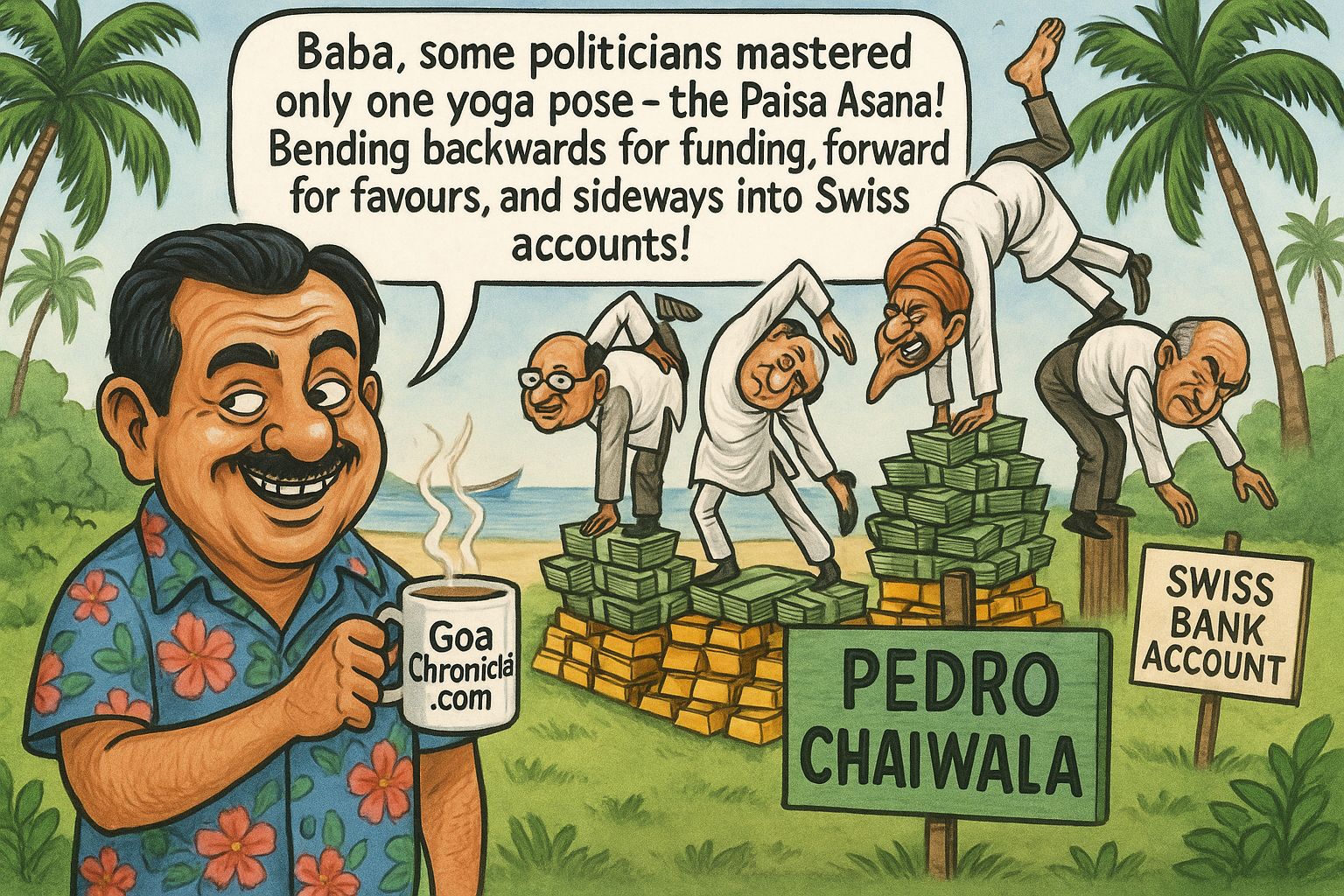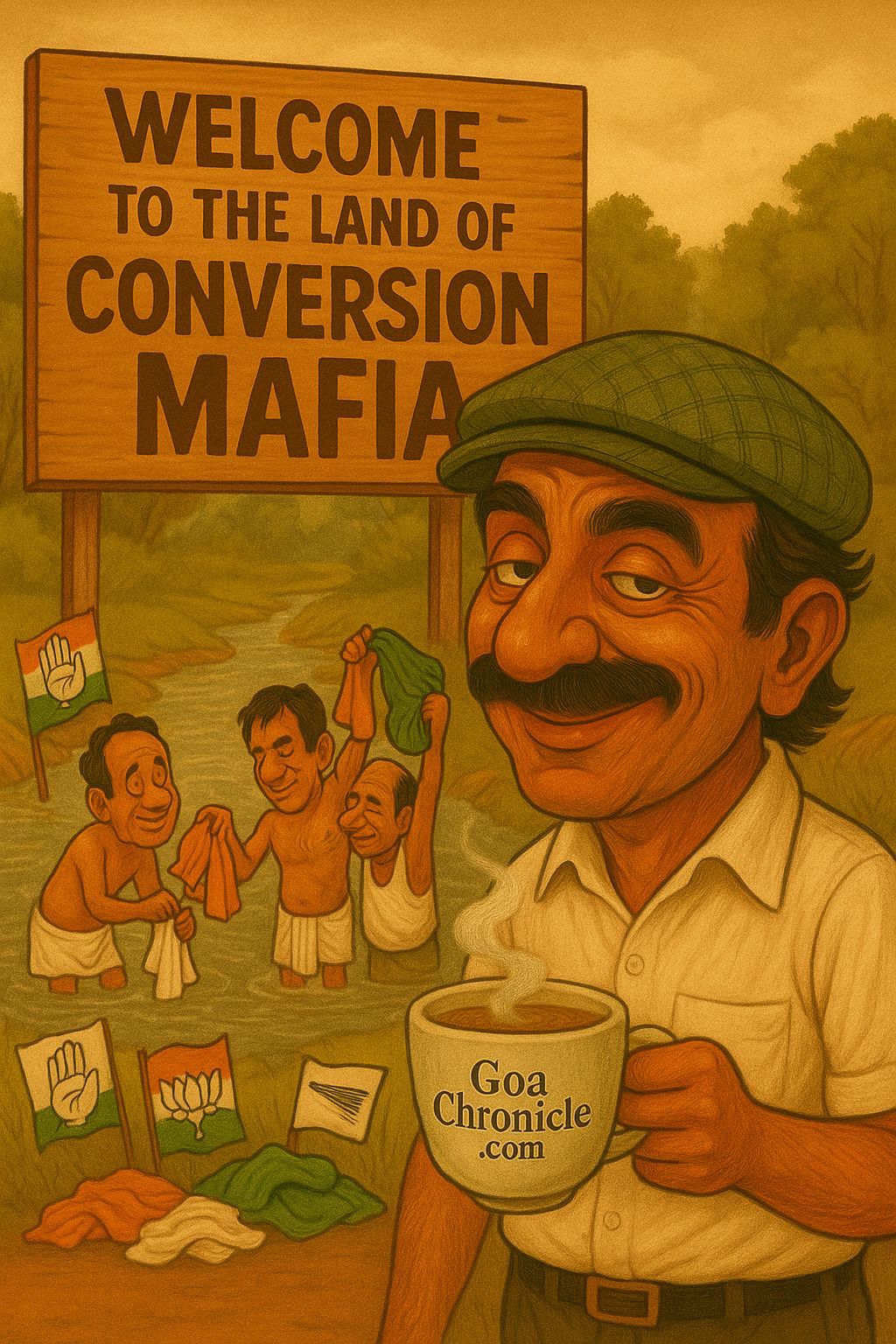I. From Proxy to Pyre
In my earlier analysis, “Noor Wali Mehsud and Pakistan: From Ally to Adversary – A Tale of Betrayal, Blowback and Lessons for India” (🔗 https://goachronicle.com/noor-wali-mehsud-and-pakistan-from-ally-to-adversary-a-tale-of-betrayal-blowback-and-lessons-for-india/ ), I wrote that Islamabad’s obsession with “strategic depth” in Afghanistan would one day become its strategic graveyard. That prophecy has begun to unfold. The war Pakistan outsourced to its western neighbour has come home – first through Noor Wali Mehsud and now through the flames of sectarian anarchy.
For decades, the Pakistani state fed radicalism as policy. What began as tactical manipulation of ideology for foreign policy objectives has now devoured the state itself.
II. The Afghan Connection – From Depth to Destruction
After the Taliban’s return to Kabul in 2021, Islamabad imagined it had regained leverage. The Taliban leadership, Deobandi to the core, was seen as a natural extension of Pakistan’s own madrassa networks. But power changes people faster than ideology strengthens loyalty.
The Afghan Taliban, emboldened by victory, began sheltering the Tehrik-e-Taliban Pakistan (TTP) – their brothers in creed but enemies of the Pakistani Army. Instead of achieving “strategic depth,” Pakistan found itself staring into an abyss. Cross-border attacks multiplied. The frontier boiled. Kabul no longer took orders from Rawalpindi.
In my earlier piece, I described Noor Wali Mehsud as the embodiment of that betrayal – a product of Pakistan’s jihad factory turned into its most determined enemy. He represents a turning point: when Pakistan’s proxies stopped listening and started dictating terms.
III. The Sectarian Volcano
While the Afghan front was collapsing, Pakistan’s Sunni heartland fractured from within.
Three sects – Barelvis, Deobandis, and Ahle Hadith – each developed its own militant architecture:
1. The Barelvis with Tehreek-e-Labbaik Pakistan (TLP), masters of mob mobilization.
2. The Deobandis with TTP and the Afghan Taliban, steeped in ideology and battlefield experience.
3. The Ahle Hadith with Lashkar-e-Taiba (LeT) and Jamaat-ud-Dawa, funded and favoured by foreign patrons.
These are no longer religious movements; they are parallel power centres. Each claims purity. Each wields guns. None obey the state.
IV. The Theology of Hate
Pakistan’s military had long played the role of puppeteer – arming one, appeasing another, and crushing a third. That balancing act is now history.
The Barelvis call shrine worship sacred; the Deobandis label it heresy. The Ahle Hadith condemn both. What unites them today is mutual hatred and an ever-shrinking tolerance for difference.
The inevitable has begun – mosque against mosque, sect against sect. The country that once exported jihad is now importing hell.
V. The Prediction Comes True
For months on my podcasts I had warned, “Pakistan will slip into anarchy and chaos by October – and most probably, a civil war.” That grim forecast now reads like a field report.
The TLP mobs riot at will. The TTP strikes from Afghan sanctuaries. The Lashkar splinters into criminal militias. The Army stands bewildered, watching its own playbook backfire.
And as I often remark – half-in-humour, half-in-truth – “India wasn’t partitioned in 1947 on the basis of religion but on the basis of IQ. Those with lesser IQs chose to stay on that side of the Radcliffe Line.”
The situation in Pakistan today proves the line wasn’t merely geographical – it was intellectual.
VI. The Clinton Prophecy
Back in 2011, U.S. Secretary of State Hillary Clinton delivered a line that has aged into prophecy:
“You can’t keep snakes in your backyard and expect them only to bite your neighbours. Eventually those snakes are going to turn on whoever has them in the backyard.”
Today those snakes, TLP, TTP, LeT, are biting their breeder.
VII. From Kabul’s Echoes to Karachi’s Fires – The Indian Lens
The Afghan-Pakistan confrontation and the sectarian implosion are two fronts of the same war: Pakistan’s war with reality.
When Kabul defied Islamabad, it shattered the illusion of “strategic depth.”
When Deobandis, Barelvis, and Ahle Hadith turned on each other, it shattered the illusion of Islamic unity. Both collapses expose the same truth – Pakistan’s ideology was its greatest enemy.
For India, the consequences are complex.
1. Security spillover: Weapons, drugs, and freelance jihadists will seep across Punjab, Rajasthan, and Jammu.
2. Radical propaganda: Digital jihad will seek Indian recruits through emotional manipulation.
3. Deliberate provocation: Whenever Pakistan’s rulers lose grip, they reignite the India narrative to rally the mobs.
Thus, India faces not a single adversary, but a fractured neighbour bleeding in many directions.
VIII. Refugees, Fallout, and the Opportunity
A civil war in Pakistan will push refugees eastward – Sunnis, Shias, Ahmadis – all fleeing the same madness. India must respond with compassion anchored in caution.
Yet chaos also brings opportunity.
An imploding Pakistan cannot project power. Its proxies weaken. Its blackmail loses bite.
India must use this moment to:
1. Fortify border intelligence and internal cohesion.
2. Build stronger ties with Afghanistan and Iran, nations equally wary of Pakistan’s instability.
3. Present to the world a lesson: religion cannot be the architecture of a modern state.
IX. Lessons from Noor Wali Mehsud
Noor Wali’s rebellion symbolised the first crack in Pakistan’s facade.
The sectarian inferno now raging represents the collapse itself.
Together they chart the complete arc of blowback – from a proxy war in Afghanistan to a civil war within Pakistan.
The jihad once launched against India and Afghanistan has turned inward, eating away at its own roots. The story of Noor Wali Mehsud was the warning. The sectarian war is the verdict.
X. Conclusion – The Fire and the Firewall
Created in the name of Islam, Pakistan may yet perish because of Islam’s politicisation. The state that prided itself on being the “Fortress of Faith” has become the graveyard of reason.
As I’ve said before, “When a state built on faith begins to fracture, its fault lines don’t stop at borders.”
The fires burning from Kabul to Karachi are not just Pakistan’s tragedy. They are South Asia’s cautionary tale.
For India, the task is clear: stay calm, stay united, stay watchful.
Pakistan’s implosion will test its own survival – and India’s resolve as the region’s stabilising force.
The jihad Pakistan lit for others now burns its own home.
From Noor Wali Mehsud’s betrayal to sectarian chaos – this is not geopolitics, it’s poetic justice.
Read the full analysis on Goa Chronicle :-
DISCLAIMER: This article reflects author’s view point. Goa Chronicle may or may not subscribe to views of the author































